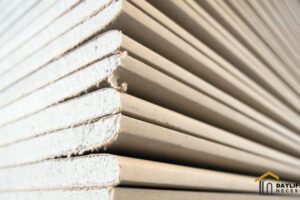Baseboard heaters can be a cozy addition to any home, providing that extra warmth during chilly days.
However, it’s not uncommon for them to develop a mind of their own and start producing annoying noises.
But fear not! In this guide, we’ll delve into the world of baseboard heater noise and equip you with the knowledge to put an end to those pesky sounds.
Let’s silence the clatter and get back to enjoying the warmth.
Understanding the Noise Issues
Before we jump into the fixes, it’s essential to understand what kind of noises your baseboard heater might be making.
From hissing and popping to rattling and clicking, these sounds can range from mildly irritating to downright bothersome.
Why do these noises occur? Well, think of your baseboard heater as a symphony of metal, plastic, and air, each playing its part as it heats up and cools down.
Tools You’ll Need
To begin your quest for quietness, you’ll need a few tools at your disposal. Don’t worry; it’s nothing too complicated.
A screwdriver, pliers, a vacuum with a nozzle attachment, and some lubricant are your trusty companions on this journey.
These tools will help you diagnose the issue and apply the necessary fixes safely and efficiently.
Safety Precautions
Before you go all handy-person, remember that baseboard heaters deal with electricity.
Safety first! Make sure to turn off the power to the heater before you start poking around.
It’s also a good idea to have a voltage tester on hand to double-check that there’s no juice flowing through those wires.
Checking for Loose Components
Alright, let’s get down to business. The first step is to check for any loose components within the heater.
Over time, screws and brackets can loosen up, leading to those unsettling rattling noises.
Gently wiggle the heater (with the power off, of course) to identify any loose parts that might be causing the commotion.
Tightening Loose Screws and Brackets
Once you’ve pinpointed the culprit, grab your screwdriver and pliers. Carefully tighten any loose screws or brackets that you’ve uncovered.
Think of it as giving your heater a warm, reassuring hug. This simple action can make a surprising difference in reducing those clanks and creaks.
Clearing Debris and Dust
Much like your spring cleaning routine, baseboard heaters need a bit of dusting too.
Dust and debris can accumulate over time and get caught in the heater’s components, leading to unwanted noise.
Use your vacuum’s nozzle attachment to gently remove the buildup and restore the serenity of your heater’s operation.
Lubricating Moving Parts
Remember, even machines need a little love. If you notice any parts that seem to be rubbing against each other, a bit of lubrication might do the trick.
A silicone-based lubricant is your go-to choice here. Apply it sparingly to ensure smooth movement without turning your heater into an oil slick.
Addressing Expansion and Contraction Noises
As temperatures rise and fall, materials expand and contract. This natural process can cause creaking and popping sounds in your heater.
One way to address this is by strategically placing small pieces of cork between components that might be rubbing together.
It’s like giving your heater a pair of noise-cancelling earplugs.
Dealing with Airflow Restrictions
Is your heater gasping for air? Restricted airflow can contribute to some unpleasant noises. Ensure that there’s enough space around the heater for proper ventilation.
Imagine trying to play a trumpet with a stuffy nose – it’s not a pleasant experience for anyone involved.
Replacing Damaged or Worn Elements
Sometimes, wear and tear are inevitable. If you’ve tried all the above and the noise persists, it might be time to replace parts that are beyond redemption.
Consult your heater’s manual or manufacturer’s website for replacement part information.
Professional Help: When to Call an Expert
Remember, not all heroes wear capes. If the noise is persisting despite your best efforts, it might be a sign that you need a professional’s touch.
A qualified technician can diagnose and fix issues that might be beyond the scope of a DIY project. It’s like calling in a musical maestro to tune up your orchestra.
Preventing Future Noise Problems
Congratulations, you’ve conquered the noise! To ensure your victory lasts, keep up with regular maintenance.
Dust off your heater occasionally, listen for any unusual sounds, and address them promptly.
A little TLC can go a long way in keeping your baseboard heater humming in harmony.
DIY vs. Professional Maintenance
Now that you’re armed with knowledge, you might be wondering whether to tackle future issues yourself or call in the cavalry.
DIY maintenance can work wonders, but there’s no shame in seeking professional assistance when needed.
It’s all about finding the right balance between your handy skills and the expertise of the pros.
Read More:
- How to Insulate Sump Pump Discharge Pipe: Keeping Your Basement Dry
- How to Insulate Walls Without Removing Drywall
- The 10 Best Water Seal For Wood of 2023: A Comprehensive Review
- Top 6 Best Battery for Sump Pump Backup of 2023: Power Outages No More
Conclusion
Say goodbye to the baseboard heater symphony of clanks and rattles! With a bit of know-how and a dash of DIY spirit, you’ve silenced the noise and reclaimed your heater’s peaceful purr.
Remember, these noises are just the heater’s way of telling you it needs some attention. So go ahead




